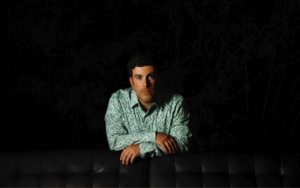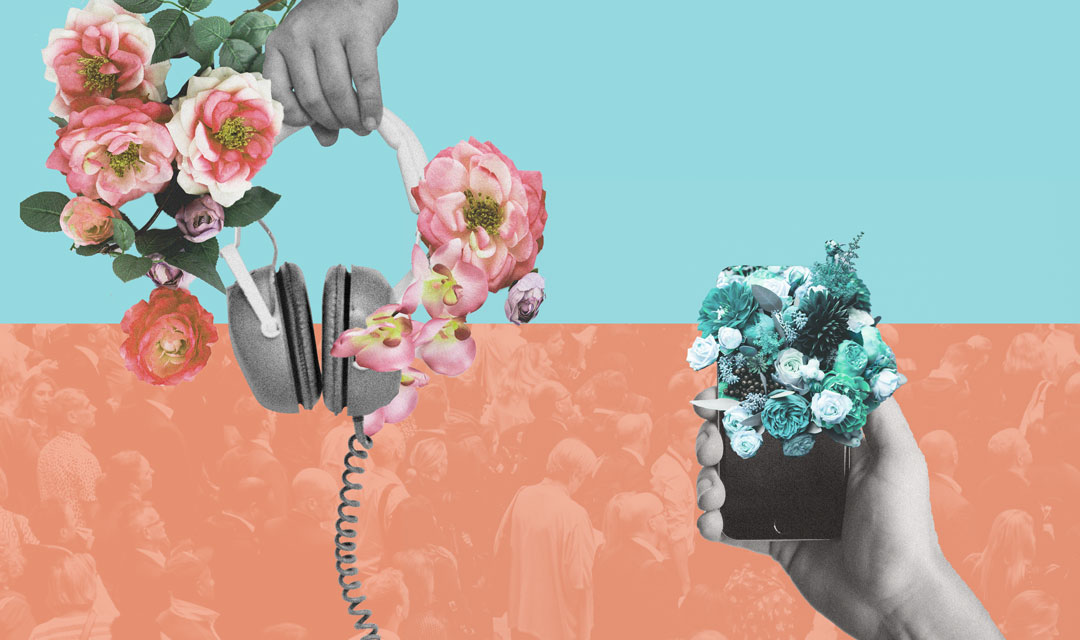
How to plan your next single release: promotion and distribution tips for a standalone track.
It all starts with a song.
You write a song, or you find a song; the song moves you and you want it to move the world. So you record and distribute that song as a single to platforms like Spotify, Apple Music, and YouTube.
Once the song is available, anything could happen. The music could change the world, it could wow a few people, or it could go completely ignored. Of course chance always plays a part, but the outcome is partially in your own hands.
The benefits and challenges of releasing singles
The good news: We’re living in an age of singles, and there are tons of ways to put one song to work.
The bad news: Every other artist has a new single to promote too, so you can’t just drop a song into the world and expect it to reach people without some effort and advance planning.
All this to say, there’s a lot more to releasing a single than just throwing it up on SoundCloud or Bandcamp. There’s a lot more to it than distributing your single worldwide via CD Baby too.
You need to first consider the strategy behind the release of your single
You’ll want to tackle each of these questions – and probably some more – when you’re formulating your release strategy.
- How are you going to attract listeners, encourage streams, and drive downloads?
- How is the launch of this single going to enhance your relationship with your audience?
- How will this song help you get to the next level in your music career?
- How does a single help you tell a little bit more of your artist story?
- How do you position your single to capitalize on streaming tools and algorithmic traction?
You should also weigh the pros and cons of releasing standalone songs.
As artists, we’re dealing in “attention economics.” Gone are the days when you could disappear for three years to make your next album and expect fans to stay loyal. In our world of short attention spans, releasing music more frequently can play a significant factor in your success.
Platforms like Spotify and YouTube even reward artists who put out songs and videos on a regular basis. Obviously you can’t (and shouldn’t) bang out a full album every two or three months, so instead: singles!
The upsides of releasing a digital single:
- It costs less to produce one song (compared to a whole album)
- You can release music more frequently, which drives algorithmic streaming activity
- You don’t have to manufacture CDs or vinyl
- Modern listeners often favor singles/playlists
- Concentrating on one song at a time helps you focus your marketing, video production, etc., so you have the opportunity to turn each single into an event
- It’s a moment to reconnect with or grow your audience
- It’s a low-risk chance to experiment with promotion strategies and learn what works (and doesn’t)
- And best of all, putting out singles is fun
But there’s still more PR power in releasing albums. So singles do have their drawbacks.
The downsides of releasing a digital single:
- It’s harder to get press and industry attention with a single
- Albums show the world you’re serious; singles don’t
- Albums can convey more about your story and brand; singles say less
- Your fans can grow numb to “new single” announcements if you release music too often
- It’s harder to merchandise a digital single
So let’s dig into the best-practices for releasing singles. I’m not sure if they all count as “strategies,” but they’re certainly all important considerations.
Check out some additional tips from Groover on how to prepare the release of your new single to increase your visibility.
1. You MUST release a single FIRST
In most cases, I’d give this advice: You should absolutely release a single FIRST if you’ve never put out music under your current artist name! Why?
Most streaming services don’t let you claim your artist profile or use their various promotional tools until you actually have music on their platforms. Since those tools can be pretty powerful, you don’t want to MISS the chance to use them for your priority releases (like an EP or LP).
So put out a single first. Plant your flag. Claim your accounts. And be ready to go full-force on the follow-up release.
2. Social media videos are all the rage, so the RIGHT song might just mean the right 15 seconds
None of your plans will matter if the song sucks. Obvs. So don’t release singles purely to feed an algorithm. The music still needs to be compelling! That can mean it’s a catchy hit single to please new fans or a demanding artistic odyssey to please your diehards. But SOMEONE needs to be pleased.
However, just as a song can stand apart from an album, a musical MOMENT can stand apart from the song.
What does that mean? Well, we’re living in a short-form video age.
There’s no such thing as too much content, and with the huge popularity of TikTok, IG Stories, IGTV, YouTube, Facebook, Snapchat, and other platforms where users are hungry for quick videos, you don’t have to make all your videos the length of the whole track.
Not every music video needs to be a fully produced music video.
Find the BEST moment in your song, then ask:
-
-
- How can this moment inspire listeners to make videos of their own (such as TikTok challenges, dance contests, caption contests, duets, response videos, and other hashtag-driven community engagement)?
- Can I shoot a short original video to this 15 seconds of music?
- Can I find good royalty-free or pubic domain footage to add to this 15 seconds of music?
- Can I post a bunch of DIFFERENT video content for the same 15 seconds, reenforcing the hook?
- What will get people on Instagram Stories to answer questions or engage with a poll?
-
Once you dig into this, you might realize there’s a difference between the song that’s perfect for your existing fans, and a moment that’s perfect for viral attention. In either case, the single shouldn’t suck. But not every song needs to be a fully-produced masterpiece either. We’ll talk more about this below.
3. Time your singles strategically before and after EP and LP releases
Unless you’re an EDM or pop artist, I still recommend you focus on making EPs or LPs (for the reasons mentioned above); then release your singles strategically before and after the bigger release.
The lead-up singles create fan excitement and algorithmic energy for the album, and then the follow-up singles, or the songs that come out between larger projects, keep you from falling into “out of sight, out of mind” territory with fans.
4. Stockpile various kinds of recordings for later use, in addition to releasing traditional “singles” from an upcoming album
There are a number of different kinds of tracks you can release as singles:
-
-
- The lead single — This is the first song you release from an upcoming EP or LP. It sets the stage for what’s to come and prompts your fans to expect more in the coming months.
- The deeper dive — This follow-up single comes out between the lead single and the album, and it provides further context for your new music.
- The B-side — Once your album has been out for a few months, you can put out singles from the same recording session that didn’t make it onto the album.
- The bonus content — After the big album splash, you want to maintain momentum on streaming platforms. In the year following your album release, it’s good to put out several “bonus” tracks, such as remixes, alternate mixes, demos, or acoustic takes. Remixes in particular let you breathe new life into a song that’s waning in popularity, and give you a chance to collaborate with artists who might work in different genres. Both of you benefit from all the cross-promotion that ensues.
- The collaboration — This is a single that is credited to two or more artist names. Similar to remixes, an original collaboration gives you a great way to take creative chances and reach beyond your existing audience (because the same track will reach the other artists’ fans too).
- The featured artist track — You could do a guest appearance on someone else’s track, or they could appear on one of your songs. Either way, it helps you get some extra attention.
- The building-blocks single(s) — One practice that’s become more common is for an artist to set a release schedule (for instance: putting out one new song a month for a year) and then let fans vote on which ten tunes will comprise the next album. Obviously you don’t need to make your art a democracy, so you could just pick which songs you want to compile into an album yourself. Billie Eilish dropped a number of singles before her huge debut LP came out, so clearly the strategy can work.
- The live cut — Not every song you release has to be a studio-quality gem. Got a live recording with a good vibe? Put it out!
- The cover song — Covering existing songs has always been a smart way to attract new listeners. You take a proven song and add your own spin to it.
- The “Didn’t this song already come out?” single — You might’ve noticed artists like Taylor Swift releasing “singles” of songs that have already appeared on albums. It’s a trick to get more attention for a particular song, and hey, nothing wrong with tricks! We all want attention, right?
-
5. Make your music more playlist-friendly
The industry is focused on playlists these days, and that’s fine; playlists can generate a ton of streaming activity.
Not all playlist activity leads to real fan engagement though, so instead of artists jumping through a bunch of hoops to game the playlist system du jour, I’d still advise you — above all — to make the music YOU WANT to make and try to reach fans the usual ways (playing shows, making cool videos, running social ads, etc.).
That being said, the dominant format of the day has always shaped music, and streaming is changing the sound of popular music. If you do want to make your singles more likely to get playlisted, you should be aware of these music trends:
-
-
-
-
No long intros and outros
People are impatient and can skip songs very easily. Don’t tempt them. Get to the goods.
-
Consider putting your hook right at the beginning
Speaking of getting to the goods, you could lead with the hook or chorus. The Beatles did it half a century ago, and Bruno Mars is doing it today.
-
Keep your songs under 4 minutes
Unless you’re making ambient, classical, jazz, or something, it’s best to keep your songs between 2-4 minutes long. Under 3 minutes would be the goal for maximum playlist-ability.
-
Watch the expletives
Explicit language doesn’t necessarily doom your song, but it certainly can limit the kinds of playlists you could appear on.
-
-
-
6. Choose the right distributor
When you sign up your single for distribution to Spotify, Apple Music, Amazon, and other digital music platforms, you should know that good distribution is about much more than pushing digital files from one place to another.
CD Baby has been paying artists weekly for more than 20 years. We don’t charge annual fees, so you never have to worry about a growing annual bill just to keep your music available online. And we offer a number of OTHER monetization solutions for you music too.
-
-
With CD Baby, your single can earn money through:
- Streaming
- Downloads
- Global music publishing revenue
- Content ID on YouTube
- Social video monetization on Facebook, Instagram, and Oculus
- Sync Licensing
- And more
-
7. Create a Spotify pre-save
-
- No point in talking about your new music if no one can DO anything with it, right? Set a release date at least a month in advance and use that time to generate energy for your song!You can do this FOR FREE via Show.co, CD Baby’s marketing platform.Here’s how to create a Spotify pre-save campaign.
- No point in talking about your new music if no one can DO anything with it, right? Set a release date at least a month in advance and use that time to generate energy for your song!You can do this FOR FREE via Show.co, CD Baby’s marketing platform.Here’s how to create a Spotify pre-save campaign.
8. Get your guaranteed Release Radar playlist placements!
Submit the song for Spotify playlist consideration.
As long as you follow the guidelines as they’re listed in the article linked above, your single will ALSO get guaranteed placement in ALL your Spotify followers’ Release Radar playlists.
9. PROMOTE your single, ahead of time AND after it’s released
Okay. Now for promotion. There’s a lot to discuss here.
The key to promoting your newest single
Set a timeline and be patient
Yes, part of the benefit of singles is that they’re low pressure and you can drop them quickly. But don’t be in TOO much of a rush. Plan ahead. Do it right. You won’t be able to launch this song again.
Depending on the scope of your campaign, you might even need 1-3 months of preparation.
Here are just some of the things you could do to promote your single, if you have enough time:
- Global distribution
- Spotify pre-saves
- Music video and lyric video production
- Song premiere
- Video premieres
- Press
- Cover artwork
- Communicating with reps from your distributor, licensing agency, etc.
- A Show.co page to feature your video
- Playlist and radio promotion
Don’t promote until your fans can take action
There’s no point in sharing a picture of your cover artwork a month before the single is available if no one can click to access, save, buy, or share the tune. Before you go crazy trying to create anticipation, set up your pre-saves or pre-orders! Get the link, then share that link when you post updates about the release ahead of its drop date.
Find the hook and make everything swirl around it
It takes a lot to get us to pay attention online, so repeated messaging is crucial. And as you’re blasting us with news about your latest single, your message will be amplified when there’s a hook beyond just “new song coming soon.”
What’s the story? The hook? The thing that makes people say “I GOTTA CHECK THIS OUT!?” If you have that, the rest of your promotion will fall into place.
For my song “Irretrievable Beauty” (which was released a few years ago, but the point still holds) there was a loose connection between the lyrics and Climate Change. I found a Public Domain image of an iceberg that intrigued me, and I decided that image would stand at the core of all my marketing for the song.
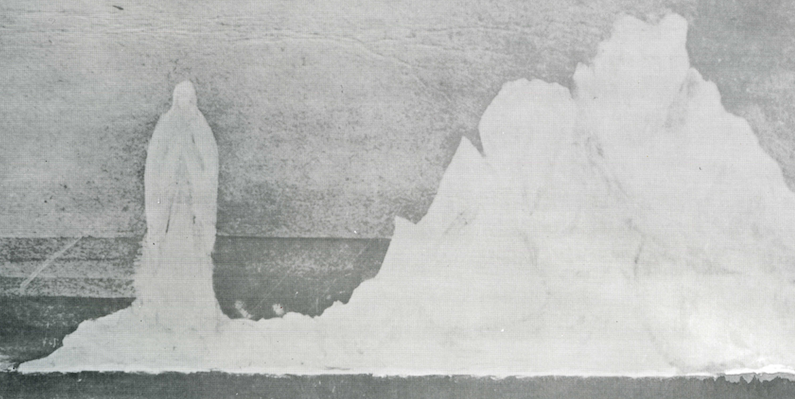

It would become the cover artwork, the background of my lyric video, and an important element in more than a dozen Instagram posts. The image was one of the first instances of supernatural photography, purporting to capture an iceberg in 1905 where a crystalline Virgin Mary rose from the water.
The mystery of that image and how it was doctored to propel a hoax all seemed to speak to the song title “Irretrievable Beauty,” as did the very nature of both icebergs and photography. So,… there was the kernel of my marketing. From there it was just a matter of expressing it in soundbites.
Find different ways to repeat the message
You’ve got your hook; now how are you going to cast it into the same waters over and over again without the fish getting bored of that same bobbing lure?
Switch the tone. You can communicate through:
- hints and teases
- direct requests (“Please listen on Spotify”)
- images
- videos
- facts and backstory about the song
- and more
The first thing I did was set up my Spotify pre-save campaign. Once I had the link, I started to slowly tease the cover artwork by splitting it up into nine smaller images for Instagram. When a viewer looked at my profile at the end of the week, all nine of the smaller images formed a grid revealing the full artwork. Every time I posted I would share the pre-save link.
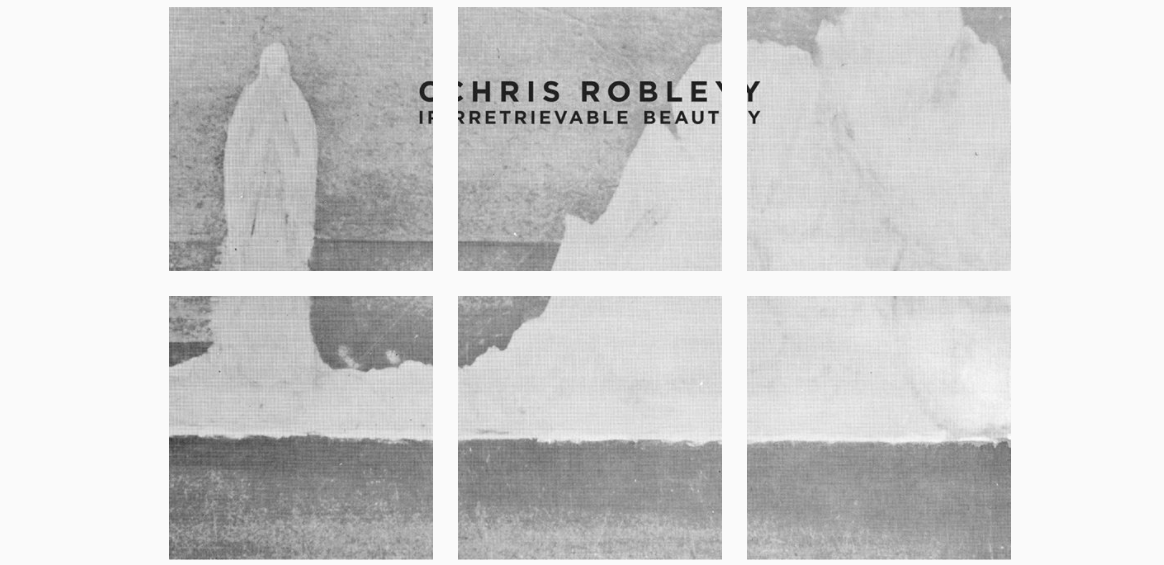

I then shifted to a more direct approach for the pre-save campaign, but with a focus on an emotional appeal…
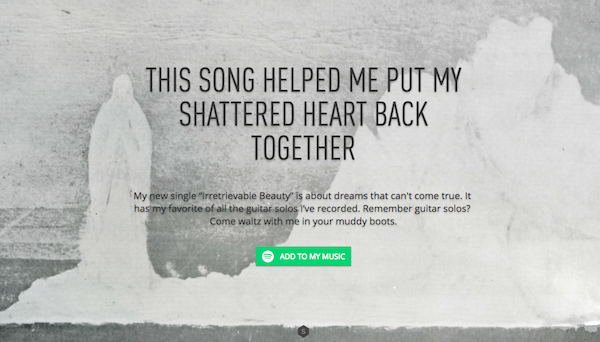

Once the song was released I put out a lyric video (on YouTube and Facebook) with tons of buried text — posing as a letter from the 22nd-Century — referring back to the origins of the photograph:
I then placed it inside a Show.co video feature page to drive conversions outside of YouTube:
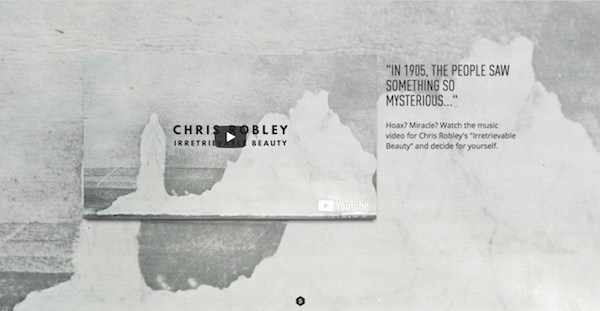

I also repeated that little hook “In 1905, the people saw something so mysterious you might say that it almost wasn’t there…” in a number of ways throughout the campaign: emails, tweets, etc.
Then I did the obvious things, like adding a Spotify player to my website announcement bar about the song.
The next thing I did was to take a bunch of phrases from the letter portion of the lyric video and place them over the cover art for more Instagram posts.
Lastly, I posted the complete text of the letter on Facebook.
In addition to changing up the tone of the message, it’s important to remember that you have many channels through which to communicate: social, website, email, live shows, etc.
There’s also print and online music media, blog premieres for your song or video, reviews, playlist placements, and more out-of-the-box options such as publicizing your music to any relevant corporations, non-profit organizations, or hobby groups that might resonate with your music or the topic of the song.
Get all your ducks in a row before the release
Again, there’s a lot of options for creatively communicating the message that you have a new song out. But it always amazes me how long it takes to compose an email newsletter or write a Facebook post. I think, oh, that’s just a couple minutes, and then suddenly an hour has gone by. For that reason, you’ll want to prepare all assets well ahead of the launch date so you can focus on promotion once the song is out(not worrying about video editing, Photoshop, copy-writing, etc.).
And as I mentioned above, be sure to notify your distributor, publicist, any industry contacts, licensing experts, and so forth, way in advance.
This also means you’ll need to have an easy way to share a private link to your single: SoundCloud, Bandcamp, etc.
Consider another angle to entice beyond the primary hook
The song might be enough. The story and hook might be enough. But there could be some casual fans who won’t make the leap and check out your song unless there’s some additional benefit (like a prize, a free t-shirt, etc.).
When I ran my Spotify pre-save campaign, I made it a contest too. I would choose two winners at random from the list of people who pre-saved the song and send them a t-shirt. In addition to sending this out through the usual means, I also ran a Facebook ad to a targeted group of people who like similar artists as me.
Think of what extras might make someone push the save, buy, or play button.
Be ready to do the grunt work
We dream of easy solutions — the service that will handle everything for you, the dream manager who will do all the work, the industry contact who holds the keys to your success — but there’s often no substitute for digging in, doing research, writing a trillion emails, bracing for rejection, and building upon the small relative percentage of wins we get.
This applies when you’re doing your own PR, radio promotion, or launching singles. It’s work. Staying up until 3am to promote a single might not be why you got into music, but it’s work that will lead some listeners TO your music — which IS the reason you got into this crazy game in the first place.
Should you release the track or the video first?
This is a common question about promoting singles, and I don’t think there’s a right answer. But I lean towards saying you should put the song out first, and THEN put out the video afterwards.
If someone watches the video, they’ve consumed the visuals AND the music at once. There’s less of a need to go and stream or download the track.
But if the song comes out first, they’ll listen, and still be interested to see the video when it’s launched.
And remember, with CD Baby, your single will be available as an art track on YouTube.
Video, of course, is one of the most sharable forms of online content, so if both the song and video are great, it might make sense to release them both simultaneously IF you can get a notable blog to premiere the video for you (meaning you give them a limited-time exclusive to debut the video on their site), though premieres have gotten harder to come by as the number of relevant blogs shrinks every year.
Be sure to upload the video directly to Facebook too (once the exclusive blog premiere is over), since Facebook favors video that is native to the platform. You can run that video as an ad on Facebook to generate interest in your music.
Should you worry about radio promotion?
Effective radio promotion can be pretty expensive, and your average DJ is going to be more interested in an ALBUM release, but if the song is right and the promoter has a record of success, it might be worth the cost.
When you release a radio single (think “hit song” usually between 2.5 — 4 minutes long), the idea is to create sustained exposure over a short period of time. That’s what it takes to get a critical mass of people to take notice: repeated listens in multiple markets. Even if it’s a great song, it’s not gonna go anywhere if it doesn’t get sustained plays.
Don’t have the budget for a radio promoter? You can still make a dent going the DIY route to community and college radio, as well as locally focused shows on big stations.
Is the radio route still feeling like a pipe dream? If so, concentrate on getting your single added to as many Spotify playlists as possible. The biggest indicator of a song’s success on Spotify is the number of times it’s been added to playlists on the platform. In some cases, a song placement on a prominent Spotify playlist can net you more listeners than a whole radio promotion campaign.
10. Use singles in CONJUNCTION with an album release
Here are three ways to use a single DURING the process of releasing an album:
Release your single as the pre-add on Apple Music
Did you know you can run a pre-add for a month before your album comes out? So think about what song will be most enticing. The playlist-friendly single? A deeper cut?
Release a bonus track with your full album
Whether you offer bonus tracks digitally, or exclusively on CD and vinyl, this gives you a great chance to feature some extra content and drive sales and streaming activity. Live track? Alternate mix? Demo? An unreleased track? Acoustic version of a favorite song from your previous album? The bonus track will appeal to fans who want to collect the whole catalog.
Release a new song on a compilation
If the song only comes out on a compilation, I suppose it’s not technically a single — BUT it might be a smart way to put a new track to work for you. You’ll benefit from the song being featured alongside tunes by a bunch of other artists, and you can always use it again later on your own album.
That’s a lot of info about planning, releasing, and promoting singles. But there’s plenty more to try! If you’ve had luck promoting a single in an interesting way, I’d love to hear about it. Please comment below.
